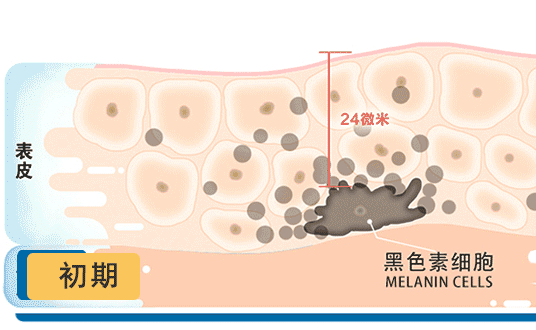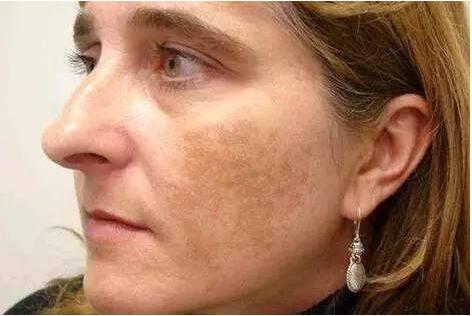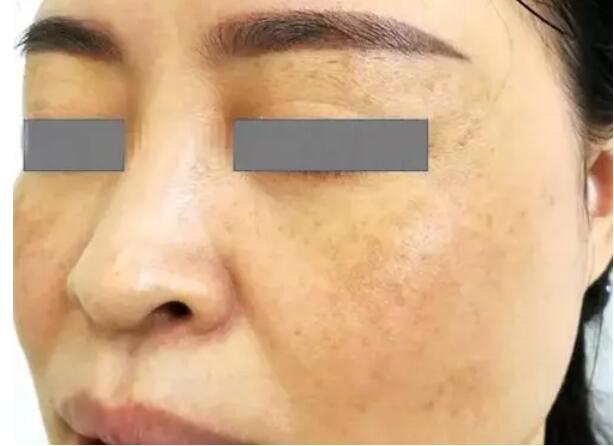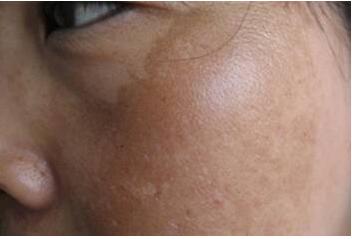Melasma is a common facial pigmentation disease. This disease is called pregnancy spots when it is seen with pregnant women, and liver spots when it is seen in liver diseases. It is more common in women, and the skin lesions are mostly symmetrical in the zygomatic and temporal regions. Typical skin lesions are irregular gray-brown or dark brown spots, butterfly-shaped, patchy, and more symmetrically distributed, without symptoms, and the skin lesions are heavy in summer and light in winter. Pregnancy spots can gradually decrease or disappear after give the birth of Child.

The exact cause of this disease is not clear, but it is generally believed to be closely related to genetic susceptibility, ultraviolet radiation, endocrine factors (oral contraceptives, pregnancy, menopause), etc.
Many studies have shown that the incidence rate of relatives of patients with melasma is higher than that of ordinary people. Foreign data studies show that 30% of patients have a family history, about 70.4% of male patients have a family history, and male patients have darker spots than females.
Ultraviolet light is an important factor that induces or aggravates chloasma. It can induce the proliferation, migration and melanin production of melanocytes. It can also induce keratinocytes to produce a variety of cytokines, and these cytokines in turn up-regulate black cells. Value-added and melanogenesis.
Endocrine factors (oral contraceptives, pregnancy, menopause) can cause hormonal disorders in the body. Estrogen and progesterone increase in pregnant women. Estrogen can stimulate melanocytes to secrete melanosomes, and progesterone can promote the transport and diffusion of melanosomes; Follicle Stimulating Hormone (FSH) and Luteinizing Hormone in Menopausal Women The (LH) level rises to a high level. LH and FSH can increase the melanocytes of normal skin and produce more tyrosinase and increase the production of melanin.
The above are important factors that induce chloasma. In addition, mood and sleep status are also a key part in the occurrence, recurrence and aggravation of the disease. The reason why chloasma occurs only on this specific part of the face is still unclear, except for females. In addition to hormone receptors and vascular factors, the density and activity of sebaceous glands may also play a role.



It can be seen that there are many causes of melasma, and the exact mechanism has not been fully elucidated. It is decided that the treatment of this disease must be a long-term process, and a comprehensive treatment combining internal and external should be adopted.
![]()
